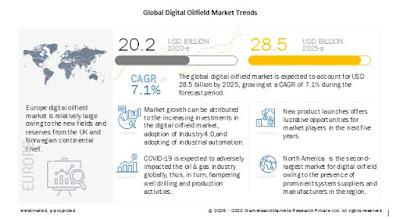The global battery monitoring system market is projected to grow at a CAGR of 18.23%, to reach a market size of USD 5.47 Billion by 2022, from an estimated USD 2.37 Billion in 2017. North America is estimated to be the largest market for battery monitoring systems, followed by Asia Pacific and Europe. The growth of the battery monitoring system market is mainly driven by a booming demand for global connectivity, accompanied by an increasing demand for data centers, increasing investments in renewable energy, energy storage, and the infrastructure industry to accommodate the rising demand for power globally. The increased operational efficiency of batteries and rising demand for electric vehicles are expected to boost the demand for battery monitoring systems.
The battery monitoring system has been segmented based on
battery type into lithium-ion based, lead-acid, and others. The others includes
nickel-based and flow batteries. The lithium-ion based segment accounts for the
largest share of the battery monitoring system market. The key applications of
lithium-ion battery monitoring systems are electric and hybrid electric
vehicles, power tools, and power supply backup. The increasing deployment of
lithium-ion batteries in these applications has resulted in the largest share
of the lithium-ion batteries segment compared to other battery types.
Download PDF Brochure: https://www.marketsandmarkets.com/pdfdownloadNew.asp?id=256167204
Battery monitoring systems are mainly used for electric
vehicles, e-bikes, and automated guided vehicles. Batteries that are integrated
in these vehicles are usually of medium or high-power density, requiring the
assistance of a battery monitoring system for optimal utilization. With rapid
innovations in the automotive industry, the usefulness and significance of
battery monitoring systems are also expected to increase.
The North America region is expected to be the Largest Market for Battery Monitoring System
The battery monitoring system market in North America is expected to lead the global market by 2022 and is projected to grow at the second-highest CAGR from 2017 to 2022. Market growth in this region can be attributed to increasing investments in data centers and growing renewable power generation capacities. Countries such as the US and Canada are the key markets for battery monitoring systems in North America.
Asia Pacific: the fastest growing market for battery monitoring systems
The battery monitoring system market in Asia Pacific is expected to grow at the fastest rate due to increasing investments in the data centers sector and growing renewable power generation in the region. The Chinese market is expected to dominate the battery monitoring system market in Asia Pacific. The battery monitoring system market is expected to grow at a high rate in countries such as China, South Korea and those in South-East Asia. An all-round effort by the governments of various countries in the region to reduce greenhouse gases and an emphasis on obtaining power from renewable sources is also likely to drive the battery monitoring system market in the region.
Request Sample Pages: https://www.marketsandmarkets.com/requestsampleNew.asp?id=256167204
The Battery Monitoring System Market is dominated by both global and regional players. The key players operating in the market include NDSL (UK), Texas Instruments (US), PowerShield (New Zealand), BatteryDAQ (US), Canara (US), and Eagle Eye (US). The other players in this market include HBL (India), Schneider Electric (France), Curtis (US), Socomec (France), BTECH (US), ABB (Switzerland), and SBS (US).



